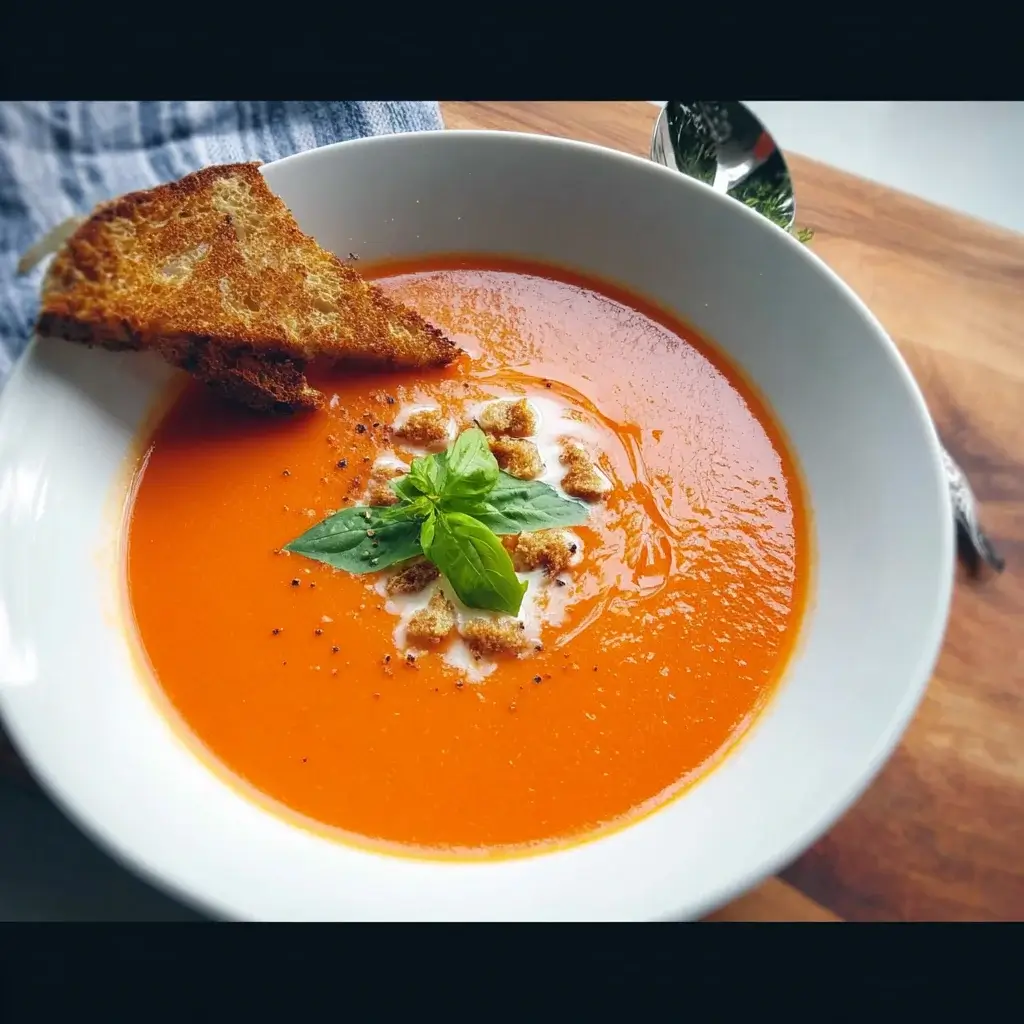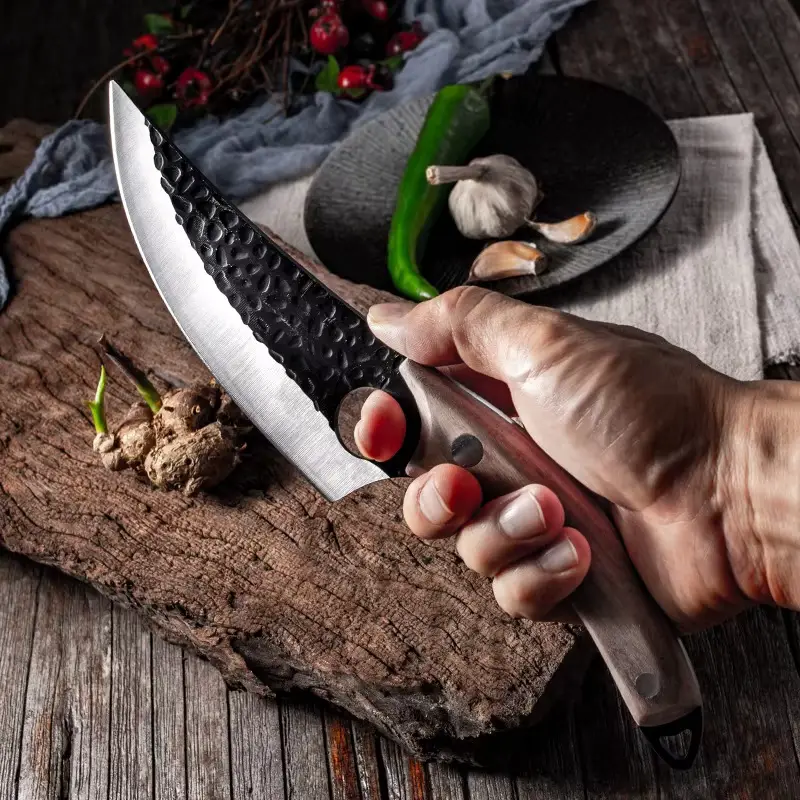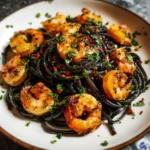There is something fundamentally comforting about a bowl of classic tomato soup. It’s a dish that transcends seasons and trends, often evoking cherished memories of childhood lunches and cozy winter evenings. While I’ve experimented with roasting fresh tomatoes and simmering canned varieties for hours, my ultimate revelation came when I embraced tomato passata. The resulting soup was a game-changer for my family. It delivered the deep, concentrated flavor of sun-ripened tomatoes with a silky-smooth texture that usually takes hours to achieve, all in under 45 minutes. The first time I served this recipe, paired with gooey, Gruyère grilled cheese sandwiches, the reaction was instantaneous. My husband declared it “restaurant quality,” and my usually picky children asked for seconds. It’s velvety, perfectly balanced between sweet and savory, and incredibly simple to make. This recipe has become our go-to comfort meal, proving that sometimes the best flavors come from the simplest, highest-quality ingredients.
Why Passata is the Secret Weapon for Perfect Tomato Soup
If you’ve never cooked with tomato passata, preparing this soup will be a delicious introduction. Understanding what passata is, and why it excels in soup recipes, is key to appreciating this dish.
What is Tomato Passata?
Tomato passata (sometimes labeled “strained tomatoes” or “tomato purée” in some regions, though purée can also refer to a thicker paste) is essentially uncooked, sieved tomatoes. High-quality passata is made from ripe tomatoes that have been washed, blanched, peeled, and passed through a fine sieve to remove all seeds and skins.
It is typically sold in tall glass jars, preserving its bright, vibrant flavor. Unlike canned crushed or diced tomatoes, passata is completely smooth. Unlike marinara or pasta sauce, it is usually unseasoned (except perhaps for a pinch of salt or a basil leaf), offering a pure, intense tomato base.
The Passata Advantage in Soup Making
Using passata for tomato soup offers several distinct advantages over other forms of tomatoes:
- Silky Smooth Texture: The primary benefit is the texture. Because the skins and seeds are already removed, you achieve a velvety smoothness instantly. If you use canned whole or diced tomatoes, you must blend them thoroughly and potentially strain them afterward to achieve a similar consistency. Passata skips that labor-intensive step.
- Concentrated, Fresh Flavor: Passata captures the essence of ripe tomatoes without the “tinny” flavor sometimes found in canned goods, or the overcooked flavor of pre-made sauces. It provides a bright, clean tomato canvas for you to build your flavors upon.
- Consistency and Speed: Fresh tomatoes vary wildly in water content and sweetness depending on the season. Passata offers year-round consistency. Furthermore, because it’s already broken down, it requires less simmering time to develop deep flavors, making this a quick yet satisfying soup.
- Vibrant Color: Passata lends a beautiful, deep red hue to the soup that is often difficult to achieve with other products.
By utilizing passata, this recipe delivers a sophisticated, creamy tomato soup that tastes like it simmered all day, but is ready in a fraction of the time.
Ingredients for the Ultimate Creamy Tomato Soup
The beauty of this recipe lies in its simplicity. High-quality ingredients are essential, especially a good jar of passata.
The Tomato Base
- Tomato Passata: 24 ounces (approximately 700g). Look for passata sold in glass jars, ideally made from San Marzano or similar sweet tomatoes. The only ingredients listed should be tomatoes and perhaps salt.
Aromatics and Fats
- Unsalted Butter: 3 tablespoons. Butter forms the flavor base and helps create the roux for thickening.
- Olive Oil: 1 tablespoon. Used in combination with butter to prevent the butter from burning and adds a subtle fruity note.
- Yellow Onion: 1 large, finely diced. Provides a sweet, savory foundation.
- Carrot: 1 medium, finely diced (optional). Carrots add natural sweetness and depth, balancing the acidity of the tomatoes.
- Garlic: 3 cloves, minced. Essential for aromatic depth.
Liquids and Creaminess
- Vegetable or Chicken Broth: 2 cups (low sodium). Using broth instead of water adds complexity. Vegetable broth keeps the soup vegetarian.
- Heavy Cream: ½ cup (plus more for drizzling). This adds the luxurious, velvety mouthfeel. You can adjust this amount to your preference for creaminess.
Seasoning and Flavor Enhancers
- All-Purpose Flour: 2 tablespoons. This acts as a thickener (roux) to give the soup body.
- Granulated Sugar: 1 to 2 teaspoons. This does not make the soup sweet; it counteracts the natural acidity of the tomatoes for a balanced flavor.
- Fresh Basil: ½ cup, loosely packed. Added at the end for that classic tomato-basil flavor profile.
- Salt: 1 teaspoon (adjust to taste).
- Black Pepper: ½ teaspoon, freshly ground.
- Red Pepper Flakes: ¼ teaspoon (optional, for a slight warmth).
Step-by-Step Instructions: Making Tomato Soup from Passata
This process is streamlined and efficient, focusing on building flavor layers before incorporating the smooth passata.
Step 1: Sauté the Aromatics
In a large Dutch oven or heavy-bottomed pot, heat the 3 tablespoons of butter and 1 tablespoon of olive oil over medium heat. Once the butter is melted and foaming, add the diced onion and carrot (if using). Sauté for 7-10 minutes, stirring occasionally, until the vegetables are very soft and the onions are translucent and sweet.
Step 2: Bloom the Garlic and Spices
Add the minced garlic and the optional red pepper flakes to the pot. Cook for about 60 seconds until the garlic is fragrant. Be careful not to burn the garlic, as this will make the soup bitter.
Step 3: Create the Roux
Sprinkle the 2 tablespoons of flour over the softened vegetables. Stir constantly and cook for 1-2 minutes. This cooks off the raw flour taste and creates a roux, which will help thicken the soup and stabilize the cream later on. The mixture will become thick and pasty.
Step 4: Add the Liquids
Slowly pour in the 2 cups of broth while whisking constantly to integrate the roux smoothly and prevent lumps. Once the broth is incorporated, pour in the entire 24 ounces of tomato passata. Stir well to combine.
Step 5: Simmer and Develop Flavors
Bring the soup to a gentle simmer over medium-high heat. Once it starts to bubble, reduce the heat to low, cover the pot, and let it simmer gently for 20 minutes. This allows the flavors to meld and the acidity of the passata to mellow.
Step 6: Blend for Silkiness
After 20 minutes, turn off the heat. Add the ½ cup of fresh basil leaves to the pot. Now it’s time to blend.
- Using an Immersion Blender: Place the immersion blender directly into the pot and blend until the soup is completely smooth and silky. This is the easiest and safest method.
- Using a Countertop Blender: If using a regular blender, work in batches. Do not fill the blender more than halfway with hot liquid. Vent the lid slightly (covering the opening with a kitchen towel) to allow steam to escape, and blend until perfectly smooth. Return the blended soup to the pot.
Step 7: Add Cream and Season
Place the pot back over low heat. Stir in the ½ cup of heavy cream. Do not let the soup boil after adding the cream, as it may curdle. Now, season the soup. Stir in the salt, pepper, and 1 teaspoon of sugar. Taste the soup. If it still seems too sharp or acidic, add the second teaspoon of sugar. Adjust salt and pepper as needed.
Step 8: Serve
Ladle the hot, creamy soup into bowls. Garnish as desired and serve immediately.
Nutrition Facts & Preparation Time
- Servings: This recipe yields approximately 4 large servings or 6 smaller servings.
- Calories per Serving (based on 4 servings): Approximately 320 calories.
(Note: Nutritional information is an estimate and will vary based on specific brands of broth, passata, and the exact amount of cream used.)
Preparation Time:
- Prep Time: 15 minutes
- Cook Time: 30 minutes
- Total Time: 45 minutes
Elevate Your Soup: How to Serve and Garnish
A great bowl of tomato soup is wonderful on its own, but the right pairings and garnishes transform it from a simple lunch into a memorable meal.
The Quintessential Pairing: Grilled Cheese
You simply cannot discuss tomato soup without mentioning its culinary soulmate: grilled cheese. The crispy, buttery bread and molten cheese are the perfect counterpoint to the smooth, tangy soup.
- Classic American: Buttered white bread with sharp cheddar or American cheese. Perfect for dipping.
- Gourmet Upgrade: Sourdough bread with a blend of Gruyère and provolone cheese. The nutty Gruyère complements the tomato flavor beautifully.
- Grilled Cheese Croutons: Make a grilled cheese sandwich, let it cool slightly, then cut it into small cubes and float them on top of the soup.
Garnishes for Flavor and Texture
A well-chosen garnish adds visual appeal, texture, and a final layer of flavor.
- A Drizzle of Luxury:
- High-quality extra virgin olive oil.
- A swirl of heavy cream or crème fraîche for tanginess.
- Basil pesto (homemade or store-bought).
- Fresh Herbs:
- Finely chopped fresh basil.
- Fresh oregano or thyme leaves.
- Snipped chives.
- Crunchy Elements:
- Homemade Croutons: Toss day-old bread cubes with olive oil, garlic powder, and salt, then bake until golden.
- Crispy Bacon or Pancetta: Crumbled over the top for a smoky, salty kick.
- Toasted Pumpkin Seeds: For a nutty crunch.
- Cheesy Finish:
- Freshly grated Parmesan or Pecorino Romano cheese.
Serving Suggestions
- Soup and Salad Combo: Serve a smaller cup of this rich soup alongside a light, crisp salad, such as a Caesar salad or a simple arugula salad with lemon vinaigrette.
- Bread for Dipping: If not serving grilled cheese, offer crusty artisan bread, garlic toast, or warm focaccia for soaking up the soup.
Expert Tips for a Restaurant-Quality Finish
While this recipe is simple, these five tips will ensure your tomato soup from passata is truly exceptional.
1. Sweat, Don’t Brown, the Aromatics
The foundation of this soup is the onion and carrot base. It’s crucial to cook these low and slow until they are completely soft and sweet. You want to “sweat” them, releasing their natural sugars. If you rush this step and brown or caramelize them too much, it can add a slightly bitter undertone that competes with the brightness of the passata. Patience in the first step yields the best flavor.
2. Balancing the Acidity is Key
Tomatoes are naturally acidic, and different brands of passata will have varying levels of acidity. Sugar is essential in this recipe not to make the soup sweet, but to neutralize that sharp acidic bite. Taste your soup after blending and adding cream. If it tastes too tangy, add sugar ½ teaspoon at a time.
Pro Tip: If the soup is excessively acidic, a tiny pinch (about 1/8 teaspoon) of baking soda can also neutralize the acid instantly. Be careful, too much will make the soup taste metallic.
3. Don’t Skip the Roux (Flour)
The small amount of flour cooked with the butter and onions (the roux) serves two purposes. First, it provides a subtle thickening that gives the soup body. Second, and perhaps more importantly, a roux helps to emulsify the soup, preventing the heavy cream from separating or curdling when added to the acidic tomato base. It’s a small step that ensures a stable, creamy texture.
4. Choose Your Creaminess Level (and Alternatives)
This recipe calls for heavy cream for a luxurious finish. However, you can customize the richness:
- Lighter Soup: Use half-and-half or whole milk instead of heavy cream. The soup will be thinner but still delicious.
- Non-Dairy Richness: For a vegan or dairy-free option that is still creamy, substitute the heavy cream with full-fat canned coconut milk (the thick cream from the top of the can). It will add a slight coconut flavor, but it complements the tomato surprisingly well. Alternatively, blend in ½ cup of raw, soaked cashews during the blending step for natural creaminess.
5. The Importance of Fresh Basil at the End
Dried basil simply won’t cut it here. The bright, slightly anise flavor of fresh basil is essential to the classic tomato soup profile. Adding the basil right before blending ensures its flavor permeates the soup without cooking away its volatile oils. Adding an extra sprig as a garnish reinforces that freshness when serving.
Frequently Asked Questions (FAQ)
Q1: Can I use canned diced or whole tomatoes instead of passata?
A: Yes, you can substitute a 28-ounce can of high-quality whole (like San Marzano) or diced tomatoes. However, the process and result will be slightly different. You will need to simmer the soup slightly longer (about 30 minutes) to break down the tomatoes. You will also need to blend the soup much more thoroughly to achieve a smooth texture. Even after blending, soup made with canned tomatoes might retain some seeds or skin fragments, whereas passata guarantees a silky texture.
Q2: How can I make this tomato soup vegan?
A: This recipe is easily adaptable for a vegan diet.
- Replace the butter: Use olive oil or a high-quality vegan butter substitute for sautéing the aromatics.
- Use vegetable broth: Ensure you are using vegetable broth, not chicken broth.
- Replace the heavy cream: Use full-fat canned coconut milk or a creamy unsweetened oat milk. Alternatively, skip the added cream substitute and rely on the soup’s blended texture.
Q3: My soup turned out too thick. How do I fix it?
A: That’s an easy fix! Tomato soup will continue to thicken as it sits. If it’s too thick for your liking, simply whisk in more broth (vegetable or chicken), a little at a time, over low heat until it reaches your desired consistency. Check the seasoning afterward, as adding more broth may dilute the salt level.
Q4: How long does this soup last, and can I freeze it?
A: Refrigerating: The soup stores very well in the refrigerator. Place it in an airtight container, and it will last for 4-5 days. Reheat gently on the stovetop over low heat, stirring occasionally to prevent the cream from separating.
Freezing: Cream-based soups can sometimes separate or become slightly grainy when frozen and thawed. However, because this soup uses a roux, it freezes reasonably well. If you plan to freeze it, consider omitting the heavy cream from the main batch. Freeze the tomato base, and then stir in the heavy cream when you reheat the soup. Allow it to cool completely before freezing in airtight containers for up to 3 months.
Q5: What is the difference between tomato passata and tomato sauce in a jar?
A: They are very different products. Passata is simply pure, strained, uncooked tomatoes (sometimes with a little salt). It is a raw ingredient. Jarred tomato sauce (like pasta or marinara sauce) is already cooked and heavily seasoned with onions, garlic, herbs, and often sugar and oil. If you use jarred sauce, your soup will take on the flavor profile of that specific sauce, rather than the clean, fresh flavor this recipe aims for. Stick to passata for the best results.

Tomato Soup From Passata recipe
Ingredients
The Tomato Base
-
Tomato Passata: 24 ounces (approximately 700g). Look for passata sold in glass jars, ideally made from San Marzano or similar sweet tomatoes. The only ingredients listed should be tomatoes and perhaps salt.
Aromatics and Fats
-
Unsalted Butter: 3 tablespoons. Butter forms the flavor base and helps create the roux for thickening.
-
Olive Oil: 1 tablespoon. Used in combination with butter to prevent the butter from burning and adds a subtle fruity note.
-
Yellow Onion: 1 large, finely diced. Provides a sweet, savory foundation.
-
Carrot: 1 medium, finely diced (optional). Carrots add natural sweetness and depth, balancing the acidity of the tomatoes.
-
Garlic: 3 cloves, minced. Essential for aromatic depth.
Liquids and Creaminess
-
Vegetable or Chicken Broth: 2 cups (low sodium). Using broth instead of water adds complexity. Vegetable broth keeps the soup vegetarian.
-
Heavy Cream: ½ cup (plus more for drizzling). This adds the luxurious, velvety mouthfeel. You can adjust this amount to your preference for creaminess.
Seasoning and Flavor Enhancers
-
All-Purpose Flour: 2 tablespoons. This acts as a thickener (roux) to give the soup body.
-
Granulated Sugar: 1 to 2 teaspoons. This does not make the soup sweet; it counteracts the natural acidity of the tomatoes for a balanced flavor.
-
Fresh Basil: ½ cup, loosely packed. Added at the end for that classic tomato-basil flavor profile.
-
Salt: 1 teaspoon (adjust to taste).
-
Black Pepper: ½ teaspoon, freshly ground.
-
Red Pepper Flakes: ¼ teaspoon (optional, for a slight warmth).
Instructions
Step 1: Sauté the Aromatics
In a large Dutch oven or heavy-bottomed pot, heat the 3 tablespoons of butter and 1 tablespoon of olive oil over medium heat. Once the butter is melted and foaming, add the diced onion and carrot (if using). Sauté for 7-10 minutes, stirring occasionally, until the vegetables are very soft and the onions are translucent and sweet.
Step 2: Bloom the Garlic and Spices
Add the minced garlic and the optional red pepper flakes to the pot. Cook for about 60 seconds until the garlic is fragrant. Be careful not to burn the garlic, as this will make the soup bitter.
Step 3: Create the Roux
Sprinkle the 2 tablespoons of flour over the softened vegetables. Stir constantly and cook for 1-2 minutes. This cooks off the raw flour taste and creates a roux, which will help thicken the soup and stabilize the cream later on. The mixture will become thick and pasty.
Step 4: Add the Liquids
Slowly pour in the 2 cups of broth while whisking constantly to integrate the roux smoothly and prevent lumps. Once the broth is incorporated, pour in the entire 24 ounces of tomato passata. Stir well to combine.
Step 5: Simmer and Develop Flavors
Bring the soup to a gentle simmer over medium-high heat. Once it starts to bubble, reduce the heat to low, cover the pot, and let it simmer gently for 20 minutes. This allows the flavors to meld and the acidity of the passata to mellow.
Step 6: Blend for Silkiness
After 20 minutes, turn off the heat. Add the ½ cup of fresh basil leaves to the pot. Now it’s time to blend.
-
Using an Immersion Blender: Place the immersion blender directly into the pot and blend until the soup is completely smooth and silky. This is the easiest and safest method.
-
Using a Countertop Blender: If using a regular blender, work in batches. Do not fill the blender more than halfway with hot liquid. Vent the lid slightly (covering the opening with a kitchen towel) to allow steam to escape, and blend until perfectly smooth. Return the blended soup to the pot.
Step 7: Add Cream and Season
Place the pot back over low heat. Stir in the ½ cup of heavy cream. Do not let the soup boil after adding the cream, as it may curdle. Now, season the soup. Stir in the salt, pepper, and 1 teaspoon of sugar. Taste the soup. If it still seems too sharp or acidic, add the second teaspoon of sugar. Adjust salt and pepper as needed.
Nutrition
- Serving Size: one normal portion
- Calories: 320






